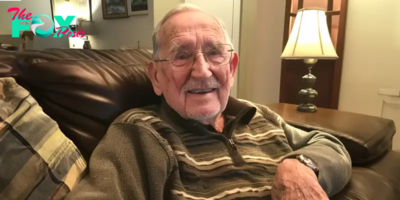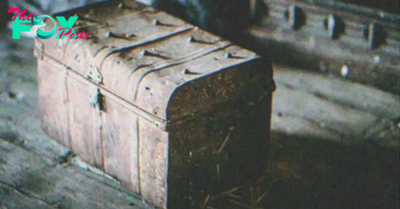Lifestyle
CEO Asks One Question That’s an ‘Instant Red Flag’ If Interviewees Try to Answer It

Interviews are dreaded by many job seekers, particularly the infamous “curveball” questions used by recruiting managers and CEOs. The CEO and creator of JKR Windows, an American window installation company, Jefferson K. Rogers, has drawn notice for his unusual interview technique: a trick question intended to weed out unsuitable applicants.
“Impossible” Question: An Assessment of Sincerity and Coachability
Rogers posted his unique approach to interviews on his TikTok channel. He asks a question that he is certain the interviewee will be unable to respond to right away. Although the exact question is still unknown, Rogers stresses that there is no “right” response. The twist is this: The CEO is more interested in the candidate’s approach to the unknown than in knowledge.

What He Looks For:
Sincerity: Is the applicant willing to acknowledge when they don’t know the solution?
Openness: Are they amenable to picking up new skills?
Coachability: Are they open to direction and instruction?
A candidate who tries to make up an answer, in Rogers’ opinion, is showing signs of a potentially troublesome personality—someone who is resistive to learning or hesitant to acknowledge their shortcomings.
Divergent Responses on Social Media
Although Rogers describes this technique as a useful means of determining fit, TikTok users had a variety of reactions.
Supporters: Some argue that the strategy is advantageous because it shows a candidate’s coachability and willingness to learning.
Critics: According to others, it’s a bad strategy that could stop comPetent applicants from attempting to solve a problem or show their resolve by trying to provide a response. Furthermore, others consider the approach to be manipulative, arguing that it puts a particular response ahead of a true comprehension of the role.
Different Methods for Evaluating Fit
Although the “impossible question” generates discussion, there are alternative methods to assess a candidate’s fit for a role:
Behavioral Interviewing: Highlighting the candidate’s prior experiences and how they responded to particular circumstances can provide important context for understanding how they solve problems and approach new tasks.
Skills-Based Evaluations: An applicant’s suitability for a position can be determined immediately by testing pertinent abilities such technical proficiency, communication, and critical thought.
Fit Between the Work Style and Values of the Company: An interview’s questions and exchanges can reveal whether a candidate’s work style and values complement the company’s culture.
The success of any interview technique ultimately depends on the particular position and Business. Although Rogers’ deceptive question might be useful to his organization, it’s crucial to think about other approaches to guarantee a thorough interview process that draws in and selects the top candidates.
I Came Home from Vacation to Find a Huge Hole Dug in My Backyard – I Wanted to Call the Cops until I Saw What Was at the Bottom

When I cut short our vacation due to Karen falling ill, the last thing I expected was to find a massive hole in our backyard upon returning home. Initially alarmed, I hesitated when I spotted a shovel inside, leading me into an unexpected adventure involving buried treasure, newfound friendship, and lessons in life’s true values.
Karen and I rushed back from the beach early after she fell ill. Exhausted but wary, I decided to check the house’s perimeter before settling in. That’s when I stumbled upon the gaping pit in our lawn.
“What’s this?” I muttered, approaching cautiously.
At the bottom, amid scattered debris, lay a shovel. My first instinct was to call the police, but then I considered the possibility that the digger might return, knowing we were supposed to be away.
Turning to Karen, who looked unwell, I suggested keeping the car hidden in the garage to maintain the appearance of absence.
As night descended, I kept vigil by a window, watching and waiting. Just as I was about to give up, I spotted a shadow vaulting over our fence.
Heart pounding, I ventured out with my phone ready to call the authorities. Approaching the pit, I heard the clink of metal on earth.
“Hey!” I exclaimed, shining my phone’s light into the hole. “What do you think you’re doing?”
The figure looked up, squinting. My jaw dropped—it was George, the previous owner of our house.
“Frank?” he stammered, equally surprised. “What are you doing here?”
“I live here, remember?” I retorted. “What are you doing in my yard in the middle of the night?”
George climbed out, looking sheepish. “I can explain. Just… please don’t involve the police.”
Arms folded, I demanded an explanation.
“My grandfather owned this place,” George began, “and I recently discovered he hid something valuable here. I thought I’d dig it up while you were away.”
“You broke into my yard to hunt for treasure?” I couldn’t believe it.
“I know how it sounds,” George pleaded, “but it’s true. Help me dig, and we’ll split whatever we find.”
Despite my better judgment, I agreed. Over hours of digging, we shared stories, George revealing his hardships—a lost job and his wife’s illness. His hope for this treasure to change their lives touched me.
As dawn approached, our optimism dwindled with each shovel of dirt revealing nothing but rocks and roots.
“I was so sure…” George’s disappointment was palpable.
Offering a ride home, we filled the pit and drove to his house, where his wife, Margaret, greeted us anxiously.
“George! Where have you been?” Margaret exclaimed, eyeing me curiously.
Explaining the situation, George’s dream of buried treasure was deflated by Margaret’s reality check.
“My grandfather’s tales were just that—stories,” she gently reminded him.
Apologizing, George and Margaret offered to repair our yard. I declined, suggesting they join us for dinner instead.
Driving home, I shared the night’s escapade with Karen, who teased me about my unusual night with a stranger. Reflecting on our conversation, I proposed inviting George and Margaret for dinner—an unexpected outcome from a night of digging for imaginary treasure.
As I assessed the yard in daylight, I realized life’s treasures aren’t always what we seek but the connections we forge along the way.
-

 Lifestyle3h ago
Lifestyle3h agoF1 NEWS: Leclerc & Sainz FURIOUS At Ferrari After SHOCKING RADIO CONVERSATION GOT LEAKED At Las Vegas GP!.cau
-

 Lifestyle4h ago
Lifestyle4h ago'You should have come to the stage,' Diljit reacts to Nimrat’s concert post | The Express Tribune
-

 Lifestyle4h ago
Lifestyle4h agoVarun Dhawan deletes LinkedIn profile within four days amid trolling | The Express Tribune
-

 Lifestyle8h ago
Lifestyle8h agoTyson Fury y Oleksandr Usyk confirman que la pelea por el título mundial indiscutible de peso pesado será la próxima .cau
-

 Lifestyle8h ago
Lifestyle8h agoF1 NEWS: Leclerc GOES NUTS At Ferrari with SHOCKING MESSAGES After DISASTROUS Las Vegas GP!.cau
-

 Lifestyle9h ago
Lifestyle9h agoAsad Siddiqui criticises 'biased casting' in Pakistan’s entertainment industry | The Express Tribune
-

 Lifestyle9h ago
Lifestyle9h agoMaya Ali performs Umrah, shares photos on Instagram | The Express Tribune
-

 Lifestyle13h ago
Lifestyle13h agoSH0CKING: Denzel Washington Turns Down $200 Million Disney Role, Says He Wont Join Woke Culture..cau

























